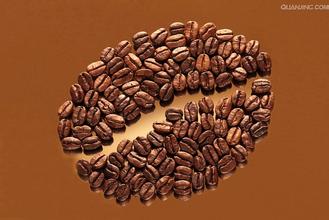Starbucks is lost again?
Starbucks is finally on the move.
Not long ago, Starbucks officially announced the full launch of the new logo. The mermaid, which represents the Starbucks logo, finally broke through the limitations of the coffee cup and swam to a wider field. "the logo of Starbucks stores in China is gradually changing." Li Jing, director of public relations at Starbucks China, told China Enterprise News a few days ago, "now, all coffee cups have been replaced with new logos, and some other hardware logos will be changed soon."
This is not just a change of logo, but a change of Starbucks marketing strategy. In order to gain more market share, Starbucks no longer wants to extend its fate to coffee alone, but to a wider range of products and channels, which is an extremely bold decision for Starbucks, which is about to make a leap forward after the crisis of closed shop restructuring.
However, to set foot in new areas is bound to face the challenge of high winds and waves, is Starbucks a mermaid who travels across the ocean ready?
It's all for the eyeball.
Starbucks will no longer be a STARBNCKS, and will no longer go to Starbucks for coffee, but probably for a cup of tea or something. Can you accept it? But this is reality. In 2011, Starbucks is getting rid of the shackles of coffee and extending its tentacles to areas you may not be able to imagine, such as convenience stores near your home.
"it is possible for us to produce other products without coffee but with our trademark." That's what JohnCulver, president of Starbucks Coffee International, said in early March, talking about the new logo.
The brand crisis caused by the rapid expansion in 2008 not only made Starbucks give more opportunities and markets to competitors, but also made Starbucks realize that there are many risks in tying brands to a single product. Diversification can not only enable Starbucks to create greater brand value, but also reduce competitive risk. Therefore, Starbucks, which firmly occupies a place in China's coffee market, must first expand the way it operates coffee. From April this year, Starbucks Via boiled instant coffee will be sold in Starbucks stores in mainland China, Hong Kong, Macau and Taiwan. At the same time, Starbucks has listed Via instant coffee on the sales list of future grocery stores and convenience stores, and selling in hotels and entertainment venues will also become a marketing method to be developed. Everything is in the plan, only a timetable is needed for implementation.
However, Starbucks' move has not received much expected response in the market. Many loyal fans of Starbucks have strongly questioned: a logo that has been used for many years is the soul of the brand in the eyes of consumers. Is Starbucks crazy to simplify so casually and even take down all the words of the brand and main products in the new logo? Not only that, Starbucks products, which have always been dominated by high-end brands, have to be put in the supermarket and are selected and subtracted like soy sauce and sugar. Is this still a symbol of the fashion life of petty bourgeoisie? For a moment, netizens posted one after another, saying that Starbucks' move was "a pig's idea."
In the view of Xie Fuliang, a brand expert, things are not as serious as netizens feared. He believes that Starbucks changes the logo "just to attract attention." "any brand that develops to a certain extent will create some topic hype. The reason why Starbucks does this is to attract more public attention and talk about it, so as to improve the brand exposure." Xie Fuliang said, "in fact, this is exactly what Starbucks wants to see."
However, some industry experts have expressed a different view: it is bold for Starbucks to remove "STARBUCKS and COFFEE" from the logo, but letting the product into the supermarket as soon as it changes the logo is likely to weaken Starbucks' brand image and influence.
Who are you up against?
The cruelty of market competition made Starbucks decide that it must live in a different way. The Chinese instant coffee market has long been coveted by Starbucks. Data show that in recent years, the sales of China's instant coffee market has grown rapidly. In 2010, the sales of China's instant coffee increased by 13%, totaling 5.1 billion yuan, but such a huge market. Swiss food giant Nestl é actually occupies a 70% share, which makes Starbucks, the coffee king, which is not too late to enter China. There is a view that Starbucks launched instant coffee to challenge Nestl é.
However, the introduction of instant coffee is also opposed by many Starbucks fans. It is reported that an investment website conducted a survey to this end, the results showed that more than 62% of people opposed Starbucks to launch instant coffee, that Starbucks "not only self-destruct brand, but also compromise with competitors."
Some experts say that Starbucks' advantage and experience lies in retail stores, supermarket channels are not Starbucks' specialty, and Starbucks has tried to enter China's retail channels with Pepsi, mainly bottled coffee. But finally parted ways for a number of reasons, until today Starbucks retail channel is still blank. Compared with Nestl é, which is mature and deeply rooted in the retail field, Starbucks, which has almost no experience and resources in the retail channel, is destined to face a hand-to-hand combat, and the expectation of the outcome is not optimistic.
Li Jing did not express any views on this issue, only stressed that he would "focus on the store business."
However, the mantis catches the cicada, and the yellow sparrow is behind. Starbucks, which is determined to attack Nestl é, may not have expected that its store business is being squeezed out and swallowed up by its peers as more multinational coffee chains enter.
While Starbucks is confidently launching instant coffee in China, its old rival McDonald's has made its stores Starbucks: comfortable sofa seats, large and colorful murals and free Internet access have attracted many consumers.
In 2010, McDonald's launched McCoffee, which is not inferior to Starbucks in taste and quality, and its serving speed is faster and the price is more civilian, which makes many Starbucks regular customers taken away by McDonald's. It is reported that an authoritative US consumer magazine even pointed out that the market rating of McDonald's coffee is higher than that of Starbucks coffee.
Now, McDonald's has announced in a higher profile that it will set up "McCafe lounge areas" in several first-tier cities and provide free Internet access. McDonald's has become a strong competitor that Starbucks can't ignore in terms of store image, store environment and service standards.
"temperament Service" and "leading Fashion lifestyle" have made Starbucks the best choice for leisure gatherings for young people, especially white-collar workers. But now, that wonderful feeling is moving away from Starbucks. COSTA, a coffee chain from the UK, is permeating the hearts of petty capitalists with a rigorous, traditional, exquisite and tasteful brand style.
Compared with Starbucks' standardized operation, COSTA pays more attention to the differences in consumer tastes in different regions, and even if the difference is sometimes only a little bit, COSTA will adjust the taste of its own products. This subtlety and thoughtfulness made British coffee brands, which have not been in China for a long time, quickly take root in the hearts of the people. Even some diehard Starbucks fans are starting to think about where to go for the next party instead of choosing Starbucks without suspense.
But COSTA's ambition is not limited to this, but to win 1 / 3 of China's market share. To achieve this goal, COSTA's marketing strategy is directed at Starbucks.
If COSTA's familiarity with the Chinese market and the number of stores are not enough to put pressure on Starbucks in the short term, then China Resources's acquisition of Hong Kong coffee chain PacificCof-fee is definitely a disadvantageous reality for Starbucks.
According to foreign media reports, global consumer goods giant China Resources Entrepreneurship has announced that it has acquired an 80 per cent stake in Hong Kong coffee chain PacificCoffee and began to expand its business to the latter's coffee business in China. Although China Resources Entrepreneurship is still a novice in the coffee field, the unique advantages of more than 3000 stores and more than 2000 retail outlets throughout mainland China will make the coffee business spread across the country with the fastest time and lowest cost. Starbucks shudders at the thought.
Whether it is the high-end market or the low-end market, Starbucks faces enough competitors to compete with it. Although these competitors encounter Starbucks at the same time, one difference is that they maintain their own brand image and customer base, and become bigger and stronger in the market segment. By contrast, Starbucks, which wants to occupy the high-end market without losing low-end channels, is losing its original brand and market advantage. Like Don Quixote, who is lonely and constantly fighting, only fighting, there is no real victory.
The risk of expansion still exists.
Along with the introduction of brewed-free coffee, Starbucks has also unveiled ambitious plans to expand its stores in China to 1500 in the next three years.
The expansion rate of "opening a new coffee shop every eight hours" once made Starbucks create the brand myth of the chain industry, but it also made Starbucks feel the bitter fruit of its inability to achieve its goals.
In just a decade, Starbucks expanded its stores in the United States from 1000 to more than 13000. This digital boom has left Starbucks unable to guarantee product quality and service standards. Changes such as "changed coffee", "yelling general service language", "unstable tables and seats like street stalls" and so on, Starbucks is no longer the place to symbolize taste and high-end life. it's more like an unclassy fast food restaurant. The erosion and damage to the brand finally broke out in 2008, and Starbucks had to close 600 stores around the world and cut 12000 jobs.
Schultz, the brand founder who returned to the helm of Starbucks in January 2008, made huge profits by "boldly" moving Starbucks cafes to US flights, thus lifting Starbucks out of the crisis brought about by its expansion. But Schultz's courage also expanded rapidly, which even began to dominate the operating style of the Starbucks brand. In the face of the huge potential of the Chinese market, Schultz's expansion engine starts again.
At present, there are about 500 Starbucks coffee stores in China, and the goal of 1500 stores means that 200,300 Starbucks stores will be created in China each year.
"the main problem brought about by expansion is the US market. We are really growing too fast in the US market, and the market is saturated, so there will be risks." Li Jing said, "there is a big gap in the Chinese market. China's total population and market growth rate will bring opportunities to Starbucks."
However, Starbucks ignores one of the most important issues, that is, China has no history of coffee, and coffee is not as indispensable to the Chinese as the United States or European countries. In other words, Chinese people's preference for a certain type of coffee is not determined by the coffee, but largely depends on the place where the coffee is run.
Some industry experts believe that the planned expansion of the Chinese market is likely to cause Starbucks, which has just come out of the trough, to go astray again. "running at high speed is more likely to fall than smooth progress." Wang Wei, a famous crisis management expert and chief professor of the Project Management Engineering Institute of Tsinghua University, said in an interview with China Enterprise Daily, "when a brand expands rapidly, it is likely to lead to the outbreak of quality crisis, complaint crisis and brand crisis at the same time, which will have a fatal impact on enterprises."
It is not easy for any company to crack the rules of the Chinese market. There will be many winners and a large number of losers eager to make decisions to enter this market. " Schultz once said that every time he goes to China, what he most wants to know is whether Chinese people buy Starbucks coffee.

Important Notice :
前街咖啡 FrontStreet Coffee has moved to new addredd:
FrontStreet Coffee Address: 315,Donghua East Road,GuangZhou
Tel:020 38364473
- Prev

The rise in the price of raw beans leads to a new standard for fair trade coffee
Due to the high price of raw coffee, the International Fair Trade Organization (FLO) raised the minimum price of its coffee and demanded different prices for Fairtrade coffee of different quality. The price of raw coffee beans, a commodity, is approaching the peak set in 1977. Fairtrade said that although this is good news for individual coffee farmers, some coffee production organizations have not really learned from it.
- Next

Starbucks wants to dominate the US single-cup coffee market
Starbucks, the US coffee chain, and Green Mountain Coffee Roasters,GMCR Coffee Co., Ltd., are aiming to dominate the single-serve coffee market in the United States. It is understood that the current size of the market is 4 billion US dollars. As the world's largest coffee chain, the key to the partnership between Starbucks and Green Mountain Coffee means
Related
- Is espresso stored overnight in the refrigerator harmful to your body? Is frozen coffee better than freshly ground coffee?
- What parameters and proportions of water temperature should be used to grind and brew fresh coffee beans? Why can't I drink freshly roasted coffee right away?
- Customers have "changed" Manner's new products! Shop assistant: Please don't mess around!
- Remove sockets in customer areas at Starbucks stores?! Netizen: I won't go if I really tear it down
- What is the difference between the taste steps of sun-dried coffee and washed coffee? Why is sun-cured coffee sweeter and washed coffee sour?
- The recipe for salty grapefruit dirty is revealed! Coffee Festival salty grapefruit dirty coffee making materials parameters ratio milk share!
- How about the flavor of Sunlight 74158 at Sidamo Banshaha Mathieu Processing Factory in Ethiopia? 74158 Share the proportion of coffee brewing parameters!
- What effect does Italian American coffee with filter paper have? Will coffee taste better if it is put on filter paper at the bottom of the powder bowl?
- What is the color difference in coffee beans? What are the characteristics of honey processed coffee beans? Why are the anaerobically treated coffee beans uneven in color?
- How does novice Xiaobai quickly get started and make coffee? Newbies learn to make coffee by hand and share the specific steps and process process!

